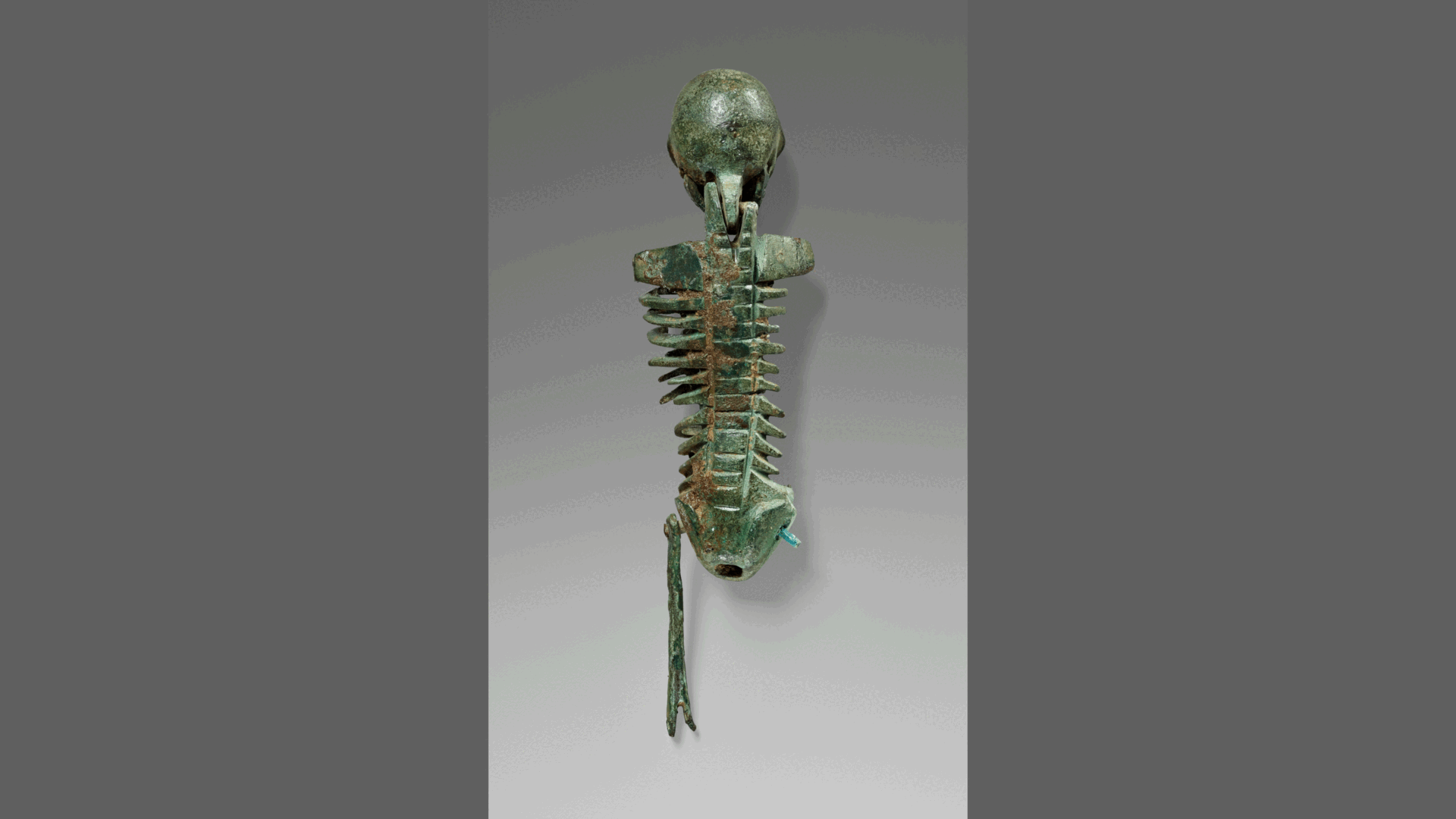Miniature Skeleton: A ghostly 2,000-year-old party favor from a Roman banquet
This spooky skeleton was likely made to remind Roman banqueters that life is short.

Name: Miniature Skeleton
What it is: A bronze skeleton with moving joints
Where it is from: The Roman Empire
When it was made: Circa 25 B.C. to A.D. 100
This small, bronze skeleton is one of only a dozen known examples of an ancient Roman "larva convivalis" — a "banquet ghost" figurine given out as a party favor 2,000 years ago.
The skeleton originally had jointed arms and legs, but only a portion of its left leg remains today. Its skull features large, round eye sockets and a toothy grin. The bronze figurine measures roughly 2.6 inches (6.6 centimeters) tall and is in the collection of the Getty Villa in Los Angeles, California.
According to a 1980 study by then-Getty curator Faya Causey Frel, the skeleton was a kind of "memento mori" — a symbol of the brevity of life and the inevitability of death. The spooky skeletons were probably handed out at dinner parties in a nod to Epicureanism, the philosophical system that considered that because death is humans' main fear, we should take pleasure in what life has to offer.
Banqueting and death were often linked in Roman art and literature, according to the Getty.
In the novel "The Satyricon," written in the late first century A.D. by Petronius, a man named Trimalchio was hosting a dinner party. The narrator tells of "a slave brought in a silver skeleton, so contrived that the joints and movable vertebra could be turned in any direction. He threw it down upon the table a time or two, and its mobile articulation caused it to assume grotesque attitudes."
Trimalchio, the host, then exclaims that "this skeleton before us here is as important as we ever were! Let's live then while we may and life is dear."
The Getty example of the banquet ghost lacks scientific accuracy. "It was perhaps more important that the bony specters were lively," Causey Frel wrote.
For more stunning archaeological discoveries, check out our Astonishing Artifacts archives.

Kristina Killgrove is a staff writer at Live Science with a focus on archaeology and paleoanthropology news. Her articles have also appeared in venues such as Forbes, Smithsonian, and Mental Floss. Kristina holds a Ph.D. in biological anthropology and an M.A. in classical archaeology from the University of North Carolina, as well as a B.A. in Latin from the University of Virginia, and she was formerly a university professor and researcher. She has received awards from the Society for American Archaeology and the American Anthropological Association for her science writing.
You must confirm your public display name before commenting
Please logout and then login again, you will then be prompted to enter your display name.
